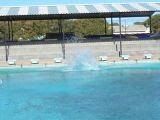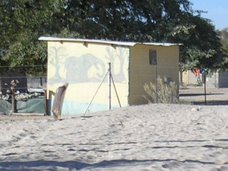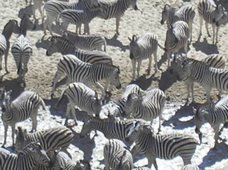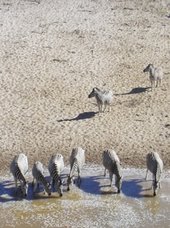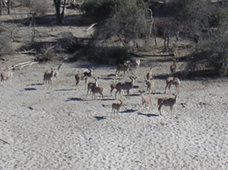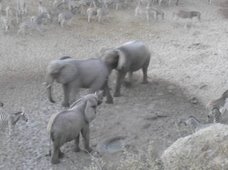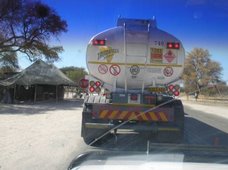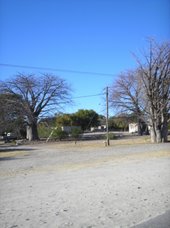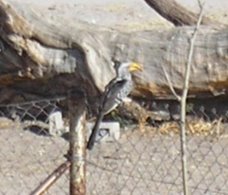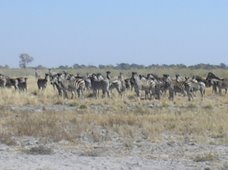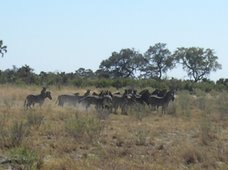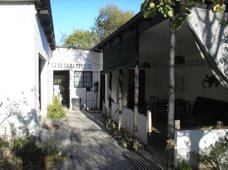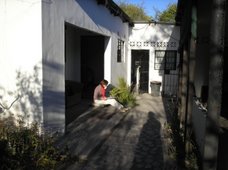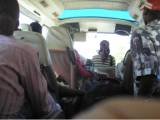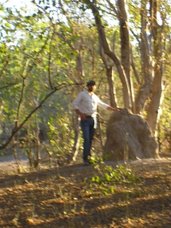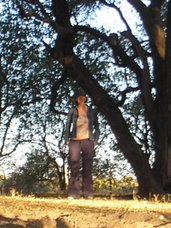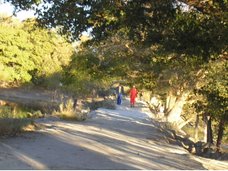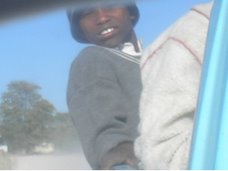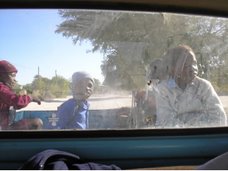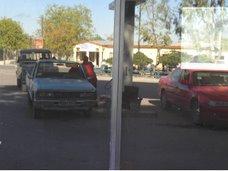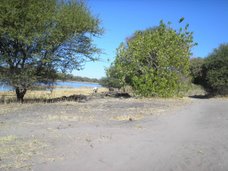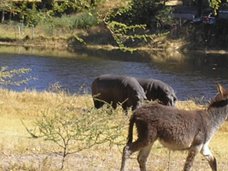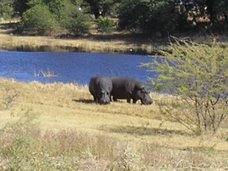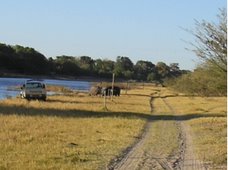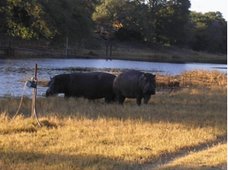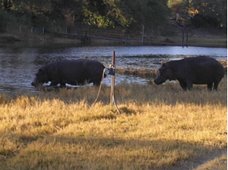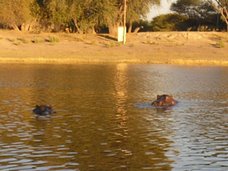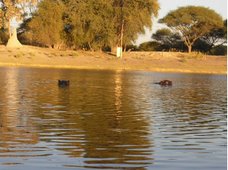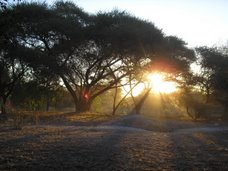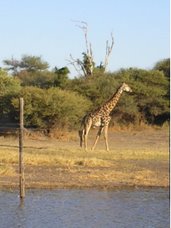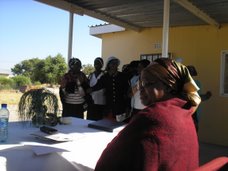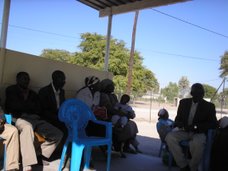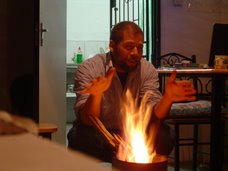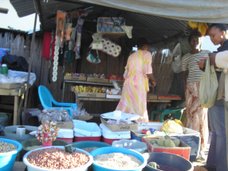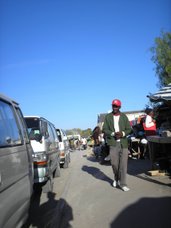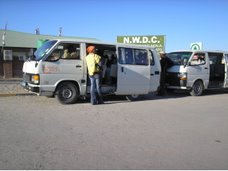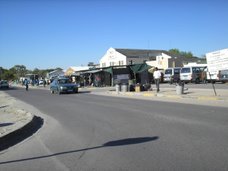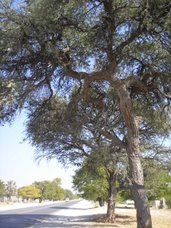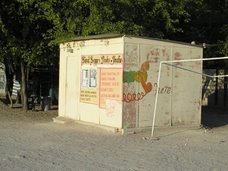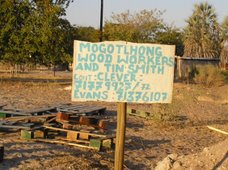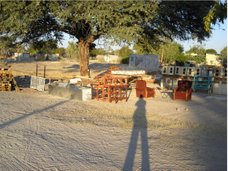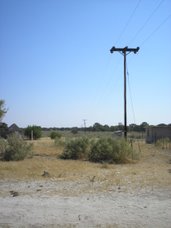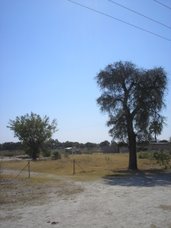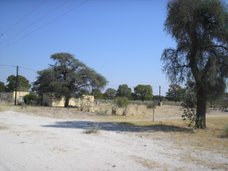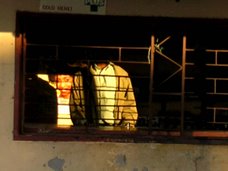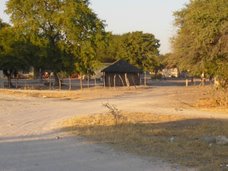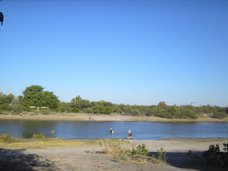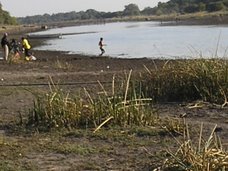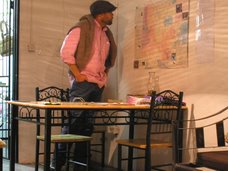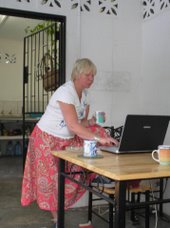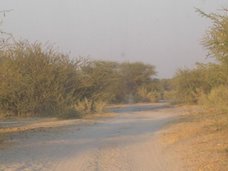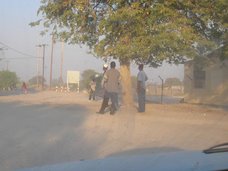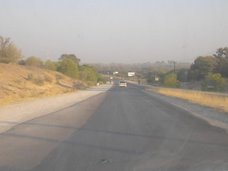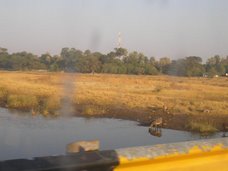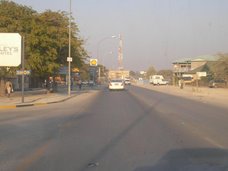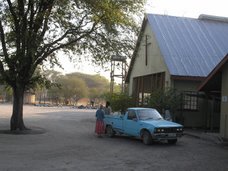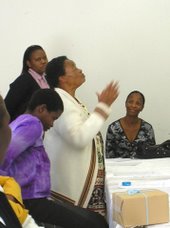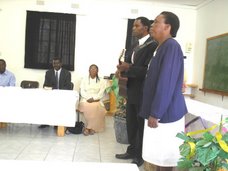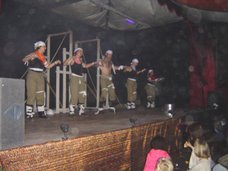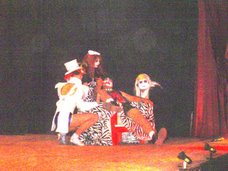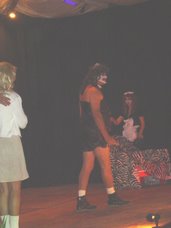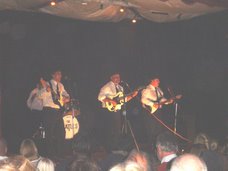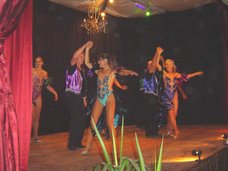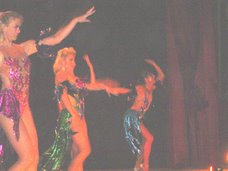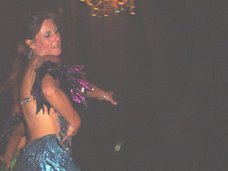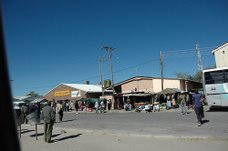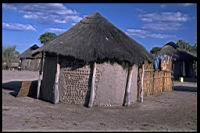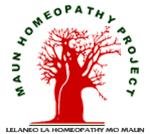Wildlife of The Okavango
First let me begin with apologies to everyone reading this blog for my misinforming you on several occasions about the name of the river which runs through Maun. Be pleased to know that it is the Thamalakane river and shares it’s name with the Thamalakane fault line along which it flows in a roughly NE,SW direction. The Thamalakene is fed by three rivers the southern most of which is the Boro. These all flow out of the Okavango Delta. South of Maun the Thamalakane river divides into the Boteti and Nahabe Rivers. The Nahabe flows southwest towards Sehitwa and is joined by the Whanx river and they both flow into Lake Ngami with Sehitwa on it’s shores.
Julia will be having her own very special wildlife experience. Julia has been spirited away to the ‘camps’ where she will be treating camp staff with homoeopathy. The camps belong to a group called Sanctuary and their personell officer, Mary, has been liaissing with Solly the MD of Itekanele health insurance to get us up to the camps. This is great news for the Maun Homoeopathy Project as it means the charity will be paid a monthly retainer to treat the staff at Sanctuary Safari Camps whether they tutn up for treatment or not. It’s good for us homoeopaths too as it means we each get a trip out to these places toeards the end of our terms in Botswana.
I’ve really been enjoying the wildlife here. Once again I must apologise for misnaming a Lilac Breasted Roller as a Lilac Breasted Rocker. Easy mistake to make. I was also lucky enough to see a Raquet Tailed Roller on the road up from the Thamalakane River just before the turn off for Francistown. So, my wildlife log so far, in chronological order is…Goats, Brahmin Cattle, Donkeys, Horses, Pied Kingfishers, Girraffes, Zebras, Warthogs, Wildebeest, Impala (not Kudu as I have probably misinformed you before), Hippopotami, Fish Eagles, Sacred Ibis, Lilac Breasted Roller, Blue Waxbills, Yellowbilled & Bradfields Hornbills, Hammerkop, Bearded Woodpecker, Yellowbilled & Yellowbilled Oxpecker, Hoopoe, Grey Lourie.
I can also identify a Mopane tree. Anne and I are determined not to be left out of the wildlife experience stakes. Last night 07/07/07 we went for a walk to the Old Wooden Bridge which crosses the river just before Old Bridge. This is a good long walk. If you begin on the southern Disaneg bank you have an interesting walk as there are now about 3 new makorro ferries to tak you across. They were not there when I made my first walk in this direction about a week ago. Now the river is much higher and is beginning to eat into the vehicle track which runs towards Maun town.
If uou begin on the disaneng bank you meet, after about half an hours walking fences and bushes which mark the bopundaries of someone’sland. These are impassable and meen that you have to turn south towards the new road which is being built through disanengand loop round the fenced in land. Once you have found your way back through the sage brush ( for that is what it is, many many yellow green sage bushes interspersed with Mopane trees and others) around the houses and down to theriverbank you continue along in the gentle evening sun. Eventually the bank in front of you curves west and appears to meet the northern Sedia bank. This feels a bit disorienting the first time you do it as it feels as if you have simply walked along the banks of a canal. If you follow the bank round and double back on yourself you realize thet you have followed a U shape down one arrm, along the base and up the other. So, now you’re standing at the top of the right arm of the U. The river flows down past this arm and you can now see the Sedia bank clearly and tou realize that you are still on the Disaneng bank.
Up river about 100 yards away is the ould wooden bridge which is a very beautiful spot. It is constructed from concrete and treetrunks laid over short sections of concrete pipe through which the river flows and it’s pillars are large live trees which povide an avenue of welcome shade to anyone crossing the bridge. If you cross the bridge from Disaneng bank towards the Sedia road bank you can walk back along this bank by walking along a road through a neighbourhood and then turning left down the alley between two compounds back onto the riverbank.
Walking the river along the Sedia road bank is muchquicker than on the Disaneng bank as one does not need to curve away from it at any point, nor negotiate small game trails gthrough thorny bushes. However, last night Anneand I decided to walk towards the bridge along this route and back along the Disaneng bank towards home.
We walked some of the way to the bridge along the Disaneng bank because we wanted to cross to the Sedia side by one of the other Makorro ferries. Captain Small Makorro is very very busy al day it appears. About 100 yerds up is Mma Makorro, so called because it is run by a venerable old lady further on there is Rootsy Makorro, so called because it is a fibreglass boat but in the shape of a traditionl wooden makorro and has no seats. Like Captain Small Makorro and Small Boy Makorro, Rootsy Makorro is punted back and forth by a small boy who pole vaults onto shore from the back of the boat to haul the boat in. After Rootsy Makorro is Small Boy Makorro and then Cattle Makorro. There is also Bridge Makorro at the bridge.
We chose Rootsy Makorro because he doesn't’t seem to get half as much trade as Captain Small Makorro. Also Mma Makorro was not around. But in future I think we will stick with rootsy. We passed small-boy-Makorro and Cattle Makorro and walked along the vehicle tracks in the sage brush. We were passed by a man teaching his son to ride his bike. The man had a broom jammed down through the forks behind the saddle down to that bit where the pedals are attached and was jogging along acting as a sort of stabiliser. They also had 3 dogs with them. Two spaniel type things and one Boer Bull type dog. All 3 were chasing birds. The Boer Bull actually ran into the river and began swimming in pursuit of a bird on the wing (a type of shrike, I think) which led him mid-stream before turning and flying back to land.
Anne and I saw some good birdlife on the way. We saw our old friend the Roller who is very timid and who only lets you get so close before flying away in a streak of electric blue. We saw a Pied kingfisher fishing and a Hammerkop dabbling. We arrived at the Old Wooden Bridge very late in the afternoon but a beautiful saffron light wast stil shafting through the trees on the Sedia bank. The Old Wooden Bridge always has a very good atmosphere and especially so on a Saturday evening. When I first came up that way I walked past the campsite and met the owner a jolly old Batswana man who told me about his camp and his orchard and how difficult things were for growing crops as Botswana’s rains hadn’t been so good that year.
Anne and I crossed the bridge and decided against followingthe river towards Old Road Bridge and Hippo Pool as it was getting late. If we didn’t want to walk back in the dark we should turn back now. We walked along the spur of land which forms the right arm of the U and into the real forest that covers it. Works of art was part of the that days themes of conversation. One of our conversations touched on Skrimshaw. We’d been approached by an artist outside the Okavango pharmacy the other day selling carved and skrimshawed keyrings which looked suspiciously like ivory. Thankfully Anne has a lot of experience of bones through her work as an archaeologist andwas able to assure us that it was bone.
Now, I’ve been really interested in Skrimshaw ever since my dad brought me home a walrus tusk with an original skrimshaw commemoratingthe victory of the US frigate ‘Constitution’ oover the British manned, captured French ship Guerrier. And I’ve always been up for the opportunity for working in that medium. So one of the things we wereon thelookout for were bones. You can often find Cattle bones a and pieces of mangled goat strewn along the river bank. We found a nice small fragment of femur and as we walked around the promontary found a great cows tibia, nice andfresh. Unfortunately we had to leave it as it was very bigand we had nothing to carry it home in so I will make do with practisingon this nice smooth, shiny piece of femur.
So, like I said, walking back along the Disaneng bank means having to negotiate a loop behind the compounds which run up to the waters edge and a couple of meandering paths through thorny bushes. It is not the quick way home. It does however have the advantage of being the riverbank on which we live so we don’t have to worry about whether we’ll be in time to catch the last makorro across the river.
We picked up the pace as the light began to fade. This is the time of day the riverbank becomes more dangerous as it becomes the haunt of hippos who tend to charge firstand ask questions later. I was feeling confident that we would see any hippo’s before they saw us and also I knew the way home so I was feeling fairly chirpy by comparison to Anne. Now, Anne is no wet behind the ears hobby homoeopath, oh no. I told you before she was an archaeologist and as such she earned her stripes roughing it with the roughest of them in Cyprus, Israel and merrie England. And grew up in Dublin and Birmingham, and Nannied with the best of them in Islington. Anne’s no softie but the prospect of meeting a hippo by surprise was a prospect of no joyous portent.
So as we trecked on and the conversation turned to how we could make the best out5 of an encounter with hippos. I reminded Anne that hippo’s have a big turning circle and so all we would need to do is double back, then again as it was so dark, nipping behind a bush would be a good option as well as doubling back. I was also pretty sure that the hippo’s would spot me better as I was wearing lighter clothes so I could run while Anne nipped behind a bush and then I could double back.
I don’t think these suggestions did much for ither of our confidences but it passed the time. That is until the bats came out. Anne is no fan of bats. But soon and sure enough we reached the path to our back gate and breathed a sigh of relief to be home, safe from marauding hippos and swooping bats. I cooked a light and celebratory cheese omlettes for us both. I had been planning to manage to make the omlette I made for myself as good as the one I made for Anne. Until that evening, if I had ever cooked omlettes for us all I had succeded in slightly overdoing the outside of mine.
Things were going well the eggs beaten with a spoonful of yoghurt were coalescing and turning a pleasing shade of yellow. I swirled the pan and sent the surplus out to the edges thus evening up the depth of the omlette. As I made the salad I paid attention to the pan, now on a low heat until the edges of the omlet began to twitch free of the pan. I picked up the pan and gave it a shake and the omlette slid smoothly. I had decided that I would seal the inside briefly sendit back over and then add the feta cheese.
I flipped the omlette like those wafer perfect pancakes which added extra relish to Chris Coombes and Claire’s party in the Barbican. Down it came, pan perfect and sizzled with the air of a cat which has found a warm and welcoming lap. I jiggled the omlette again. The inside was sealed just nicely, up and over and add the feta. But it was not to be. Oh no. I wasn’t going to be the man who would be eating an omlette just as good as his pal’s that night. Up went the omlette, down campe the omlette only to catch its edge on the pan and come a very nasty cropper.
Polly helped me tidy the kitchen by eating 1/5 of my omlette off the kitchen floor and Anne made me feel a lot better by giving me a little piece of her omlette which was a beauty if I do say so myself. Altogtether, that day a splendid time was had by all.
Wildlife Park
As if we hadn’t had enough. Today (08/07/07) Anne and I drove over to the wildlife park.. This is a fenced off area of bush. You can see the fences from town extending half way into the river and you can walk up to them from our place which gives you an Idea of how big it is.
I think today our mission was really to scout the place out and generally see what we could see. We walked in a straight line pretty much for 2 hours through sage brush and forest and down to the rivers edge. We had some good encounters along the way. First things we saw were squirrels. Then – Wow, excuse this interuption readers but I have just heard a hippo grunt close by. I have heard them in the afternoon on days when I have seen them on the bank but never so late at night and never, apparently so close to the compound. A hippo grunt sounds like a pig grunt about fivetimes in quick succession, grunt-grunt-grunt-grunt-grunt. But of course you can tell that it comes from a larger and more cavernous beastie.
So, next in the wildlifw park we saw pretty warthogs rooting and down at the rivers edge very timid ground hornbills and a fisheagle carrying lunch home in its talons. Also a bearded woodpecker diligently knock-knock-knocking for grubs and really ignoring us until I thought I’d try to take his photo when he became suddenly alert and went to find a more peaceful tree.
Then, through the trees an ubiquitous sage brush we saw a new russet brown, more vital than the grey looking tree trunks. It was an Impala. Chosing separate paths and moving as slowly and quietly as we could we moved towards them. They had seen us a long time before we had seen them and they transformed themselves into a blur of brown and white and were away. We followed in the direction they had taken, slowly and quietly hoping to glimpse them as they paused.
They are very beautiful creatrues to watch moving, they appear not to touch the ground as they leap away into the shadows. One moment there are three Impala in a clearing standing still and you can feel 6 black eyes watching the way you move. Suddenly the leader will give a snort like a starting gun and many more bodies than you had seen will flach through the dappled shade each one different in size and shape but all part of a stream of energetic beauty.
The wildebeest are much harder to see as they are as grey as the shade and the tree trunks but we made one or two out as the Impala flew noislessly past them, the impala’s golden bodies throwing the grey of the Wildebeest into silhouette.
Finally we saw Zebra in groups of three. The Zebra were far less timid than the Impala and far slower moving. One of the group would stand their ground as we approached, face on to us and twitching it’s top lip over it’s teeth. They’re great little horses, if indeed they are horses. Are Zebras horses? A crate of Maun’s finest Champagne to anyone who can tell me! Whatever speicies Zebras belong to they are very good to look at. They are well rounded in a baroque way and move with an indescribable (for me anyway) dignity. I’m so glad I have had the chance to see these animalsup close and in their natural habitat.
We didn’t see the Giraffes which I think are the prize. It would be an amazing experience to be able to walk as close as one could to these animals. I was thinking about the Giraffe recently. They are built along the lines of prehistoric animals yet they really are beautiful and that, I think is what stops them looking so obviously strange. Their beauty takes your mind off their weird shape.
Also, a box of Maun cigars to anyone who can tell me whether there is an Aesop’s fable or Just So Story to explain why chocolate is poisonous to dogs.
Monday, July 09, 2007
Subscribe to:
Comments (Atom)






